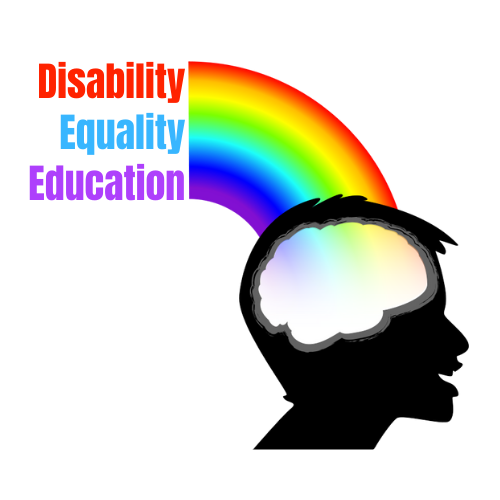
Astrophysicist Dr. Wanda Diaz-Merced: Introduction to Sonification
This is a lesson about Astrophysicist and Computer Scientist Dr. Wanda Diaz-Merced who is a blind scientist who studies the stars by listening to data converted into sound through a process called sonification.
Sonification is the use of non-speech audio to convey information or perceptualize data. To put it more simply, Sonification is the process of using sound to convey information or turning data into sound. Sometimes, sonification can convey more detailed information better than visual representation can.
Sighted and blind people use sonification to gather information. And blind people can use sonification to study the stars and the universe.
This lesson can supplement Science units about Sound, Space, or Technology. It can even be adapted to supplement Music lessons about pitch and tone.
Image Description: The image is a digital artwork featuring a black and white photo of a Wanda Diaz Merced, who is wearing a headset with a microphone and appears to be speaking. She is set against a colorful, abstract background that includes a large orange circle, a smaller yellow circle, and a blue brushstroke. There are also various abstract shapes and patterns, including dots and lines, scattered around the image. On the left side, vertically, it says "SONIFICATION OF STARS" and on the right side, horizontally, it reads "WANDA DIAZ MERCED" in yellow text.
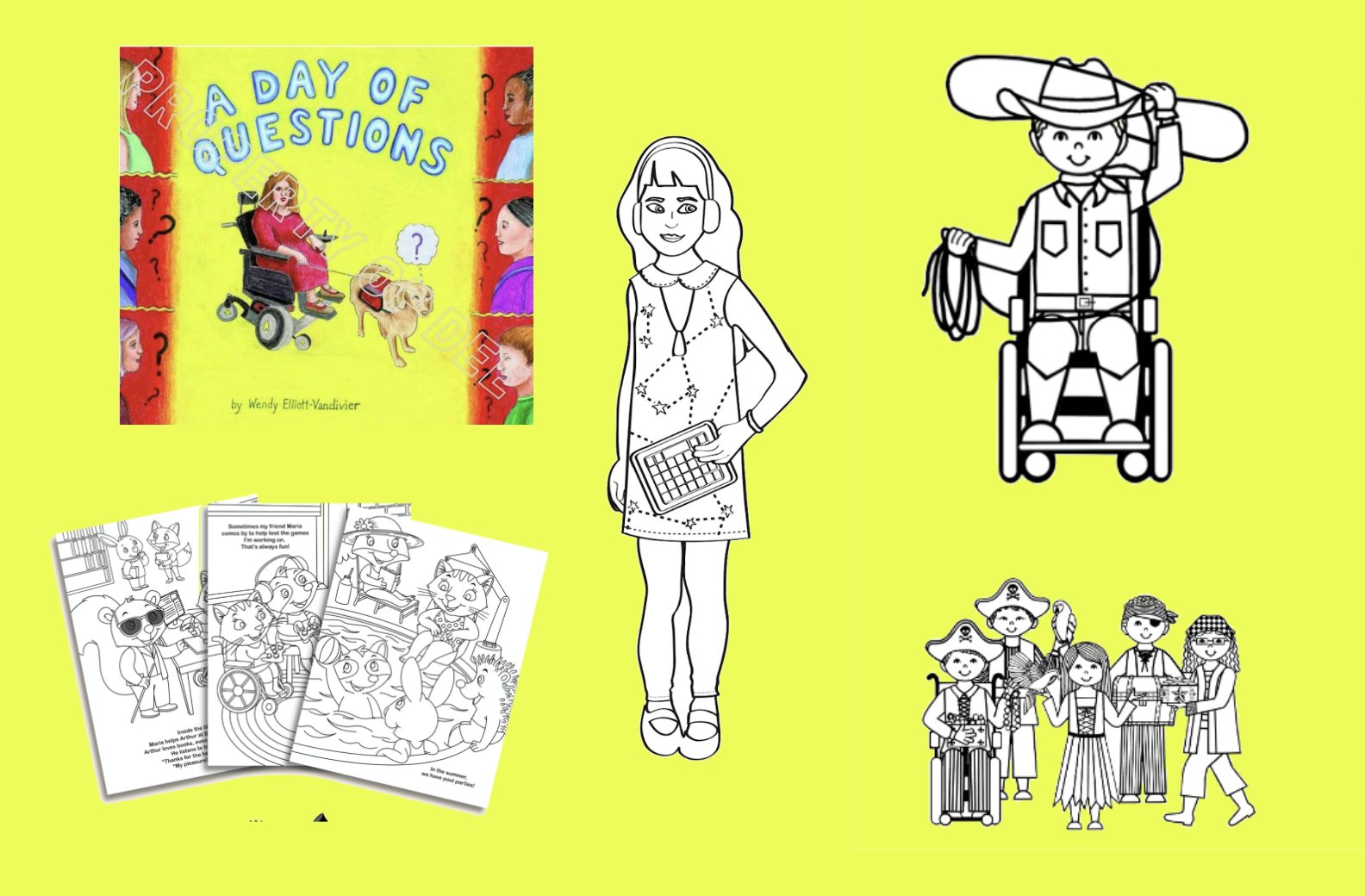
Coloring Books, Pages and Clip Art with Disability Representation
Including coloring pages and artwork in lessons (some of these allow you to use as clip art) that includes disability representation furthers the goal of regularizing disability by seeing it and offering opportunities to learn and ask questions.
Image Description: small images of the coloring books on a yellow background

Critical Media Analysis: Autistic characters in children’s media
Summary:
In this lesson, students will look at four different characterizations of autistic children in contemporary media. They will watch excerpts or videos featuring the characters, read about the characters, and study how they were created. They will then fill out an evaluation chart to analyze the different depictions. They will have a group discussion as a class and write a reflective response.
Issues considered will include: character’s role within the show/movie; who was involved in writing/creating the characters; what public response has been; and so on. The lesson will conclude with a group discussion and students will complete a journal-style piece of writing as an exit ticket.
The characters that the students will learn about are:
Julia from the television show Sesame Street;
Pablo from the television show Pablo;
the main character from a Pixar short called Loop;
Carl, from the show Carl the Collector.
Image Description: Upper left quadrant is Julia, a muppet with yellow skin and orange hair. Upper right quadrant shows the main character from Loop, a girl with brown skin and dark hair who is reaching with her hands to touch reeds. Bottom left quadrant shows Pablo, a hand-drawn boy with light skin standing on a green hill with a rainbow behind him. Bottom right quadrant shows Carl, an illustrated raccoon wearing an argyle sweater.

Deaf President Now Unit
This unit focuses on the historical event that caused a ripple in the Deaf community, Deaf President Now. The unit includes three lessons, three projects, and a lot of fun!
Image Description: Black and white photo of students holding a banner that says “Deaf Prez Now!”.

The Day the World Heard ... Kent State and Gallaudet University
Students will be introduced to two important events in US history – the Kent State Massacre and Deaf President Now protest. They will be exposed to the events that occurred on the two college campuses and their outcomes. They will read the First Amendment and be presented with information to assist them in drawing conclusions about whether these were peaceful protests. They will obtain information to assist them in comparing and contrasting the two events. As the culminating activity, students will create a storyboard about May 4, 1970 at Kent State.
* NOTE: This lesson could be taught during Deaf Awareness week and the following week ‐‐ could encompass ASL, history and ELA classes.
Image Description: Colorful painting depicting a protest scene in front of a domed building. In the foreground, several figures are holding a large sign that reads "DEAF PRESIDENT NOW" in red letters. There are also several flags in vibrant colors, including red, blue, and yellow, being waved by the crowd.

Disability and Disability Arts - Physical Disability and Accessibility- Coloring Book - “A Day of Questions”
Disability and Disability Arts - Physical Disability and Accessibility- Coloring Book - “A Day of Questions”
This is a three part lesson to introduce the student to disability and a disabled artist's work. Disability arts is an art form where the context of the art takes on disability as its theme. Disability art is about exploring the various realities of what it's like to be disabled. The theme of disability may be used in a variety of ways in how the artist chooses to represent the theme in their work. This lesson uses a coloring book created by Wendy Elliot Vandivier.
Image Description: Cover artwork for the book “A Day of Questions” by Wendy Elliot-Vandivier. The background is yellow and has a drawing of a woman in a read dress with shoulder length red hair sitting in a motorized wheelchair with a service dog wearing a red vest in front of her with a question mark over the dogs head. There are 6 illustrations of children on each side of the cover facing the center with question marks in the background.
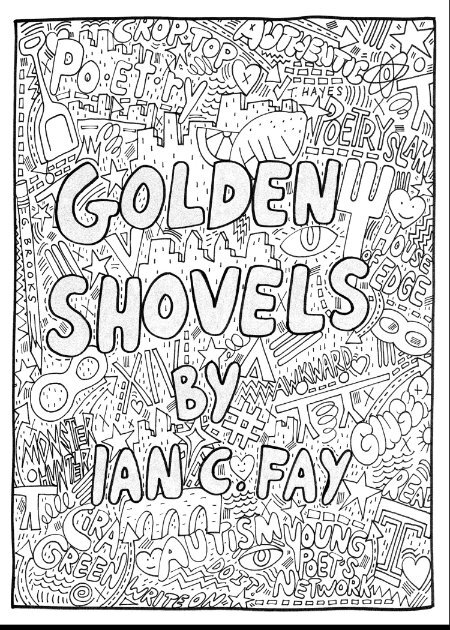
Disability and Disability Arts Invisible Disabilities/Autism/Poetry/Golden Shovels Poetic Form
Lesson title: Disability and Disability Arts - Disability and Disability Arts Invisible Disabilities/ Autism/Poetry/ Golden Shovels Poetic Form
This is a three part lesson to introduce the student to disability and a disabled artist's work. Disability arts is an art form where the context of the art takes on disability as its theme. Disability art is about exploring the various realities of what it's like to be disabled. The theme of disability may be used in a variety of ways in how the artist chooses to represent the theme in their work. This lesson uses poetry created by Ian Fay.
Image Description: black and white illustration with the title “Golden Shovels by Ian C. Fay” in bold open letters. The background is filled with dense, intricate doodle pattern.

Disability and Disability Arts - Invisible Disabilities - “See Me; Invisibility” Paintings Lessons
Disability and Disability Arts - Invisible Disabilities - “See Me; Invisibility” Paintings Lessons
This is a three part lesson to introduce the student to disability and a disabled artist's work. Disability arts is an art form where the context of the art takes on disability as its theme. Disability art is about exploring the various realities of what it's like to be disabled. The theme of disability may be used in a variety of ways in how the artist chooses to represent the theme in their work. This lesson uses 3 paintings created by Mali Fenning.
Image Description: 3 paintings by Mali Fenning. Left artwork features geometric shapes and a dark color palette. Top right art features a colorful face with red lips and curly hair. The bottom right artwork has wavy lines and circular shapes in a mix of colors.

Disability and Disability Arts Vision Loss - Disability Empowerment “Disability Looks Like You and Me”
Disability and Disability Arts Vision Loss - Disability Empowerment “Disability Looks Like You and Me”
This is a three part lesson to introduce the student to disability and a disabled artist's work. Disability arts is an art form where the context of the art takes on disability as its theme. Disability art is about exploring the various realities of what it's like to be disabled. The theme of disability may be used in a variety of ways in how the artist chooses to represent the theme in their work. This lesson uses art created by Jade Ramos.
Image description: A colorful abstract artwork featuring a silhouette of a person with long hair outlined in bright neon colors. The background is filled with vibrant, swirling patterns. Text says “Every One Matters, Even You” along the left and right edges. The person is wearing a shirt with the text “Disability Looks Like You and Me”

Drawing your City - the Art of Stephen Wiltshire
In this lesson, students will be exposed to the artwork of Stephen Wiltshire. Wiltshire is from Britain and known for his large-scale detailed drawings of cityscapes. After learning about Wiltshire, who is autistic, students will have the opportunity to draw their own cityscape, inspired by Wiltshire’s art. For an extra geographic element, they can write facts about their city and create a bulletin board display. They will also consider how Wiltshire is often most widely described as a savant/genius, and how these words can create challenging stereotypes, both for the autistic community and for artists. For both, these words set up unrealistic expectations about who autistic people are/can be, and what art is/can be/how much training and practice is required to be an artist.
Image Description: Photo from behind a person wearing a dark jacket and a cap with headphones that is drawing on a large, detailed cityscape illustration. The drawing appears to be a bird's-eye view of a city with numerous buildings and streets.

Easterseals Short Films Lesson Plan
Students will review the social model of disability and then apply it to 4 short films created for the Easterseals Disability Film Challenge. “The Easterseals Disability Film Challenge gives filmmakers—with and without disabilities—the opportunity to collaborate to tell unique stories that showcase disability in its many forms (disabilityfilmchallenge.com).” Students will watch the 4 winning films, and then break into groups to focus on analyzing one film as a group.

Happy Paintings - The Art of Maud Lewis
In this lesson, students will learn about the art of Maud Lewis, a prolific Canadian folk artist who lived in rural Nova Scotia (Eastern Canada, near the Atlantic Ocean), and worked in the mid-20th century. She is now believed to have been born with juvenile rheumatoid arthritis, but it was not diagnosed or treated in her lifetime. Students will learn about her artwork, rooted deeply in the place where she lived, and have the opportunity to keep a sketchbook for a week, and create a painting in Maud Lewis’ style that reflects their own local world. Students will also consider the complex intersections between disability, poverty and the arts that are embedded in Maud’s life story.
Image Description: a painted clam shell that features a red birdhouse in the center, surrounded by colorful flowers and two blue birds on either side. The shell is mounted on a wooden background. The artist's name, "Maud Lewis," is visible on the shell.

Hispanic Heritage: Frida Kahlo (Intersectionality of Ableism, Creativity and Feminism) Lesson
Frida Kahlo (1907 - 1954) was a Mexican artist who was influenced by the Mexican Revolution. She experienced a disability at two times in her life. Her determinism helped her cope with the pain of overcoming polio, a difficult marriage and bus-trolley accident. Frida Kahlo’s curiosity and love for nature were often the subjects of her paintings. Known as the “mother of the selfie,” Frida also created more than 200 paintings of herself. This unit of lessons is to recognize the creativity and imagination of Frida Kahlo.
Image description: Photograph of Frida Kahlo against a green floral background
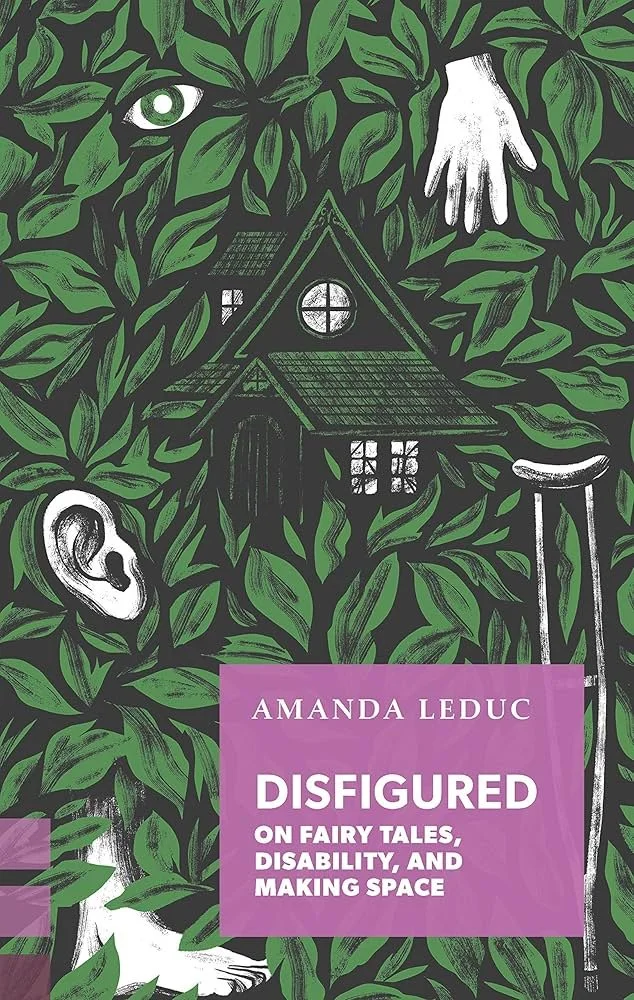
Into the Woods: Exploring Disabilities in Fairy Tales and Classic Stories
Using Amanda Leduc’s book “Disfigured: On Fairy Tales, Disability, and Making Space,” as inspiration students will consider different representations of disability in fairy tales and classic stories. They will watch an interview and a reading with Leduc, read 2 texts referenced in her book and learn to identify issues with how disabled people are presented and stereotyped. Students will produce two written assignments. One is an update to a classic story (either Beauty and the Beast or the Little Mermaid); the students will rewrite the classic tale to center and honor experiences of all bodies and abilities. The second assignment is a choice assignment. Students will either rewrite a second tale, or write a 1 page autobiographical story in the style of a fairy tale.
Image Description: The cover of the book “Disfigured: On Fairy Tales, Disability, and Making Space” by Amanda Leduc
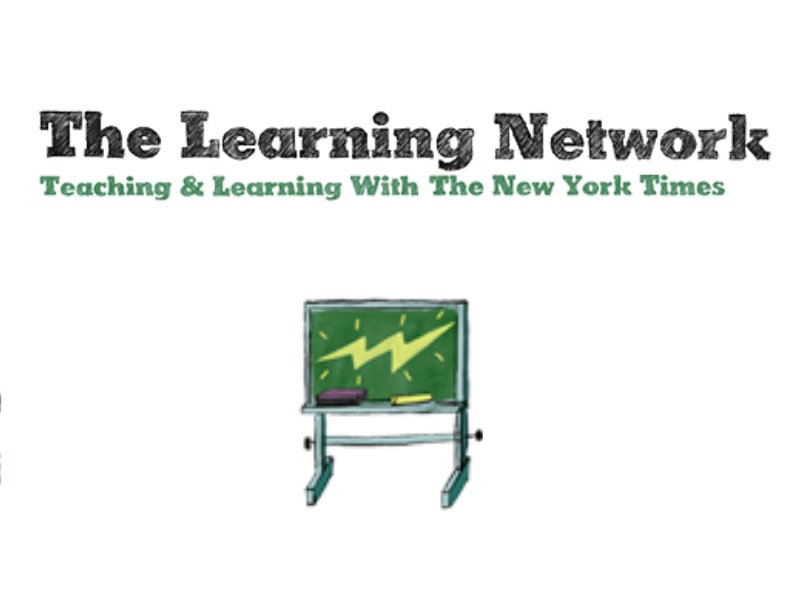
The New York Times - ‘The Hidden Image Descriptions Making the Internet Accessible’
In this lesson, students will learn about alt text, and image descriptions that help people who have low vision or are blind to use the internet. Then, they will practice using the feature.
Image Description: "The Learning Network Teaching & Learning with the New York Times" Below the text is an illustration of a green chalkboard with a lightning bolt.

Thinking Critically about Disability - Social Media Lesson
When Stephen Hawking passed away, many artists processed the loss through art. Their art depicts disability from multiple perspectives. In this activity students will explore 2 contrasting images. Take note of the details and how the images depict Stephen Hawking and his physical disability. Both of the images are from Twitter and students may have already seen both of the images just scrolling through their phones. Students will explore elements of art, social studies and psychology in this lesson. The focus of the discussion is up to individual educators.
Image description: illustration of Stephen Hawking, seated in his motorized wheelchair, floating above the earth with other planets in the background
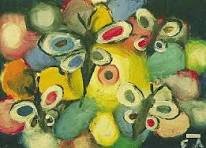
Using Stencils and Touch to Create Visual Art (Based on the Art of Eref Armagan)
By experimenting with stenciling, one technique Eref Aramagan uses to create his Art, the student will become aware of a way by which visual art can be created by use of touch.
Image Description: Painting of brightly colored butterflies made using stencils by Eref Aramagan

We Will Ride Lesson by Pop Culture Classroom
In this lesson students will read a 2-page graphic novel format story about the Gang of 19 and “We Will Ride” action, and how they fought for equal rights for the disabled.
Image Description: Graphic Novel cover showing protesters in purple black and off white on a green background with the title “Colorful History Comics #31 We Will Ride” underneath the comic.
